
On a recent bird photography trip in Petchaburi province myself and Colin Rogers spent some time photographing a number of common species in a quite ugly scrap of “wasteland”. At first glance the area looks of little value with scrubby invasive bushes, piles of illegally dumped rubbish, murky pools of water and rutted tracks – certainly it is exactly the sort of place that “developers” love to turn into something else. But spent a little time there in the late afternoon and it becomes apparent how valuable a habitat the small area is to a large number of individual birds and a fairly wide range of species as they come to feed on dumped scraps and bathe in puddles of rainwater.
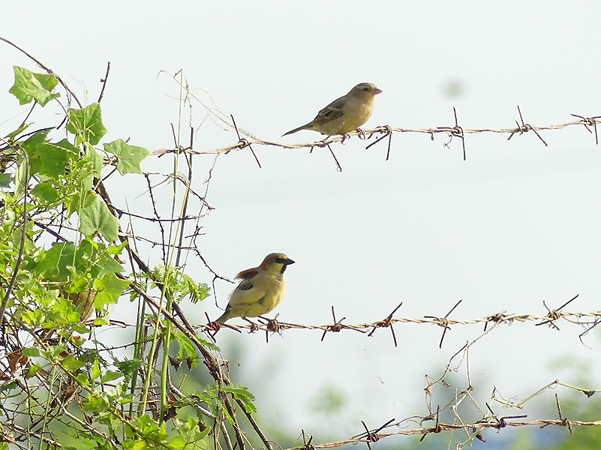
Plain-backed Sparrows by Nick Upton
Plenty of Eurasian Tree Sparrows were to be seen here but also a smaller number of Plain-backed Sparrows which came to bathe in a very trash-strewn puddle. These handsome birds are not overly common in Thailand and it has been mentioned to me that they are in decline alongside the increase in House Sparrows.
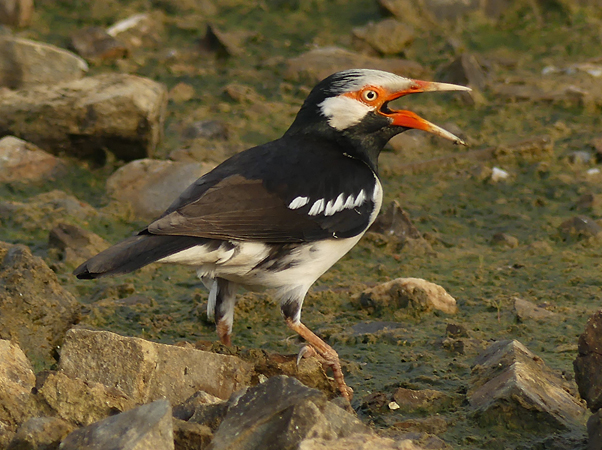
Asian Pied Myna by Nick Upton
Large numbers of Mynas and a few Starlings came in to the area in the late afternoon to feed on some dumped vegetable matter that looked a bit like rotting bananas and bathe in the puddles. Common Myna, White-vented Myna and Asian Pied Myna were very numerous but we also saw a pair of White-shouldered Starlings and a single Chestnut-tailed Starling. Although many of these birds are very common, seeing them at close quarters allows one to really appreciate how smart they are; just look at the Asian Pied Myna above and the White-vented Myna below in the late afternoon glow.
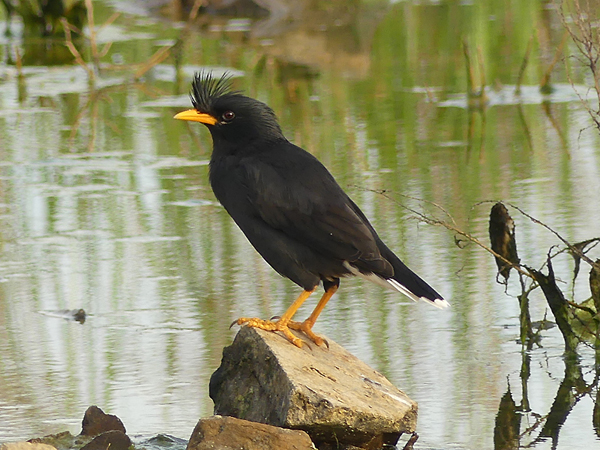
White-vented Myna by Nick Upton
Chestnut Munia is one of my favourite open-country birds in Thailand; I like the contrast between its chestnut body, black head and its silver bill. As we were photographing the bathing birds three of these handsome birds came in to bathe in some small puddles within the seeding grasses that they were feeding on. Next time I will try to get closer so that they fill more of the frame!

Chestnut Munia by Nick Upton
One bird which is very common in open areas during the dry season is Black Drongo. However, getting a good photo has always eluded me as it frequently flies away and due to its black plumage getting any feather detail is hard in the harsh sunlight. We found one resting in a shady area before it came to bathe and managed to get some nice photos even if the background is a bit on the over-exposed side.
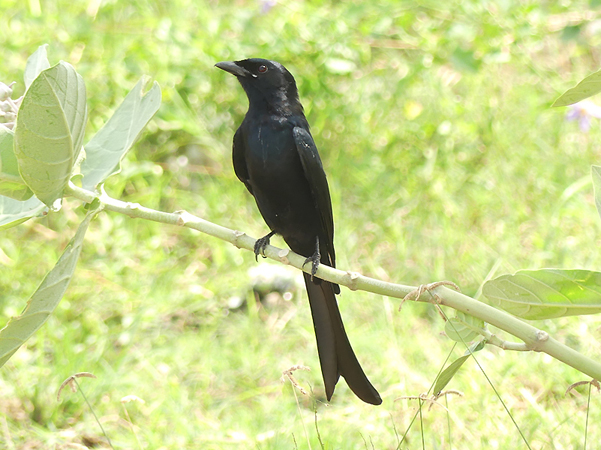
Black Drongo by Nick Upton
Brown Shrike is another bird which falls into the same category as Black Drongo – common but hard to photograph well due to the light conditions.
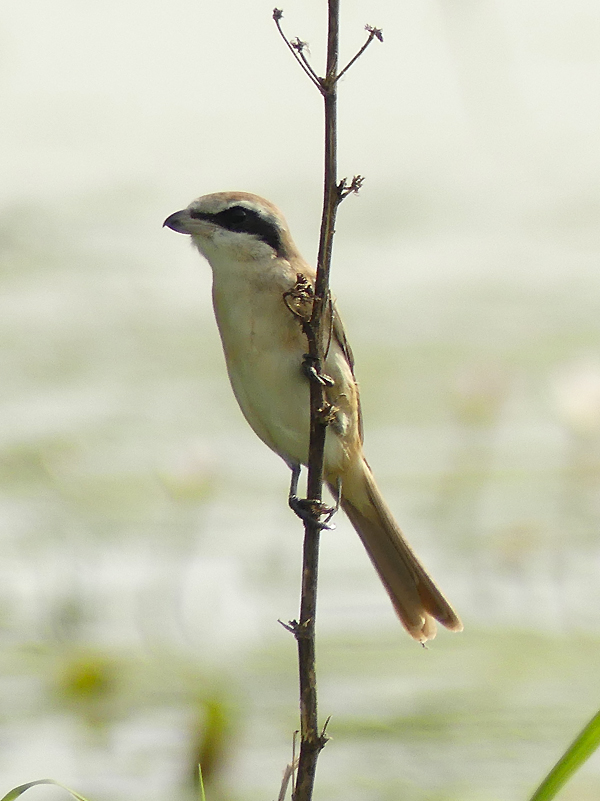 Brown Shrike by Nick Upton
Brown Shrike by Nick Upton
Due to the amount of standing water in the area of scrubby land we were birding in there were also some of the commoner wading birds to see too; Little Ringed Plover, Red-wattled Lapwing, Wood Sandpiper, Common Sandpiper and Temminck’s Stint. Nice to be able to get close to some of them and make the most of the nice afternoon light.

Red-wattled Lapwing by Nick Upton
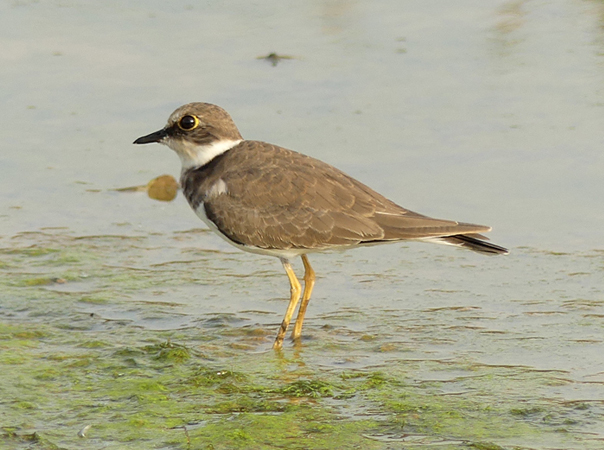
Little Ringed Plover by Nick Upton
While I was scanning through the area I began watching a Pond Heron. In its winter plumage it was impossible to say whether it was Javan or Chinese Pond Heron but as I was looking at it, the bird began looking upwards and following the flight path of a dragonfly/damselfly. To my surprise it suddenly snapped at it and caught the insect. You can see it in the tip of the bird’s bill if you look carefully in this photo.
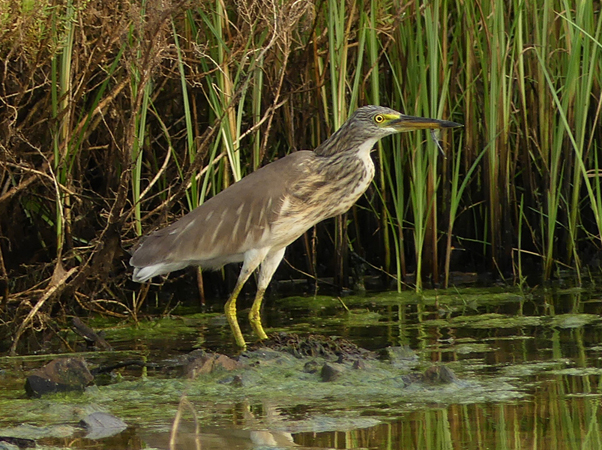
Pond Heron sp. by Nick Upton
Quite amazing what a haven for birds this little messy bit of land can be. During our watch we also saw Spotted Dove, Red Collared Dove, Indochinese Bushlark, Streak-eared Bulbul, Scaly-breasted Munia and this Eastern Yellow Wagtail.

Eastern Yellow Wagtail by Nick Upton
Thailand is full of scraps of land like this and many of them in the Laem Pak Bia/Pak Thale area provide a haven for resident and especially migrant birds. Sadly areas like these are rapidly being developed into shrimp farms, hotels or other buildings and the region has a very quickly shrinking area of habitat. Given that this area is a migrant hotspot it is a real shame that there is no organization that is attempting to safeguard the diversity of habitats and protect the network of micro sites that are probably essential to the overall bird diversity and abundance of the area.


 November 30th, 2016
November 30th, 2016  Nick
Nick  Posted in
Posted in  Tags:
Tags: 










